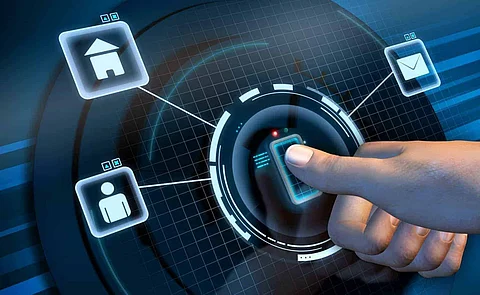
- Insights
- Cryptocurrencies
- Stocks
- White Papers
- Industry
- Geography
- Insights
- Cryptocurrencies
- Stocks
- White Papers
- Industry
- Geography


As technology becomes a pivotal part of our everyday lives, we are increasingly willing to replace the traditional way of security with easy biometrics technology. As an emerging technology, biometrics system can add great convenience by taking over passwords and helping law enforcement catch criminals. However, all is not good. Biometrics technology has its pros and cons and needs secure encryption to conceal our biometric data.
In the past, checkpoints, government organizations, public and private companies were using the physical sign in methods like paper-based signature records to identify employees, contractors, visitors, etc. The old method is being greatly replaced by biometrics technology. The technology not just reduces the time and makes things easy, but also provides highly responsible security system and attendance maintenance solutions without significantly increasing the budget. People welcomed the biometrics technology for its high level of accuracy and efficiency in preventing identity theft and maintaining employees and visitors attendance records. Biometric technology is more sophisticated, cleverer, super sensitive and put in place to help protect companies and individuals. Most importantly, it is impossible to steal or duplicate biological characters. However, it comes with a cost if the biometric data is not well protected. Henceforth, it is mandatory to maintain a secure system to store biometric data.
Biometric technology is the science and technology of analyzing human body characteristics. Biometrics is a way to measure a person's physical characteristics to verify their identity. These include physiological traits, such as fingerprints and eyes, or behavioral characteristics, such as a unique way to complete a security-authentication puzzle. Behavioral biometrics is mostly used for verifying an individual.
Voice recognition: Voice recognition measures a person's voice patterns, speaking style, and pitch. It is used to find unknown speaker's identity, thus minimizing threats over phone calls, internet calls, etc. For example, your bank might use voice recognition to verify your identity when calling about your account.
Fingerprint identification: Fingerprint identification is one of the oldest forms of biometrics technology. It comes with a huge range of use cases like unlocking mobile phones, doors, lockers, etc. Fingerprint identification is the cheapest and safest method for protection. Like all other technology, this idea too identifies and verifies a person's fingerprint with data saved in the system beforehand. Law enforcement, agencies, hospitals and clinics, schools and colleges, gym and fitness centers have adopted the technology to identify and verify individuals rightfully.
Iris recognition: Iris recognition identifies the person's iris, the colorful area of the eye surrounding the pupil. Although widely used in security applications, it isn't typically used in the consumer market.
Face recognition: Face recognition measures the unique patterns of a person's face by comparing and analyzing facial contours. It is used in security and law enforcement, but also as a way to authenticate identity and unlock devices like smartphones and laptops.
Hand geometry: Hand geometry measures and records the length, thickness, width, and surface area of a person's hand. These devices date back to the 1980s and were typically used in security applications.
For example, if we take fingerprint into a device, the primary step is to record the biometric information in a database. The information is later used for comparison with live information. Anyone else can put their finger on your device, but is highly unlikely to open the system. Handwriting, voiceprints and the geometry of your veins are other unique biometrics useful for security applications. A biometric system consists of three different components,
• Sensors- Records your information and reads it when your biometric information needs to be recognized.
• Computer- Whenever the biometric information needs access, there has to be a computer storing the information for comparison.
• Software- Software is basically whatever connects the computer hardware to the sensor.
There are some common security measures you can make to help protect your biometric data. Encrypt your biometric storage with a strong password. These hectic passwords make it hard to steal your data by simply cracking it by guess. Keep your biometric information in a few, limited places. This will give hackers minimum chance to breach the data.
One of the best ways to keep the device that has biometric data is to keep the software up-to-date. When your device manufacturer notifies you of an available software update or patch, install it right away to help reduce the opportunity of your device being vulnerable to security flaws. It is essentially important to keep your operating system and internet security software current.
Provide two-factor authentication on the device if possible. It will help hackers from easily entering the security system by guessing a single password. Big entities that use biometric should opt for blockchain technology in devices to ensure the safety of user's data. Blockchain allows only authorised parties to access the data.
